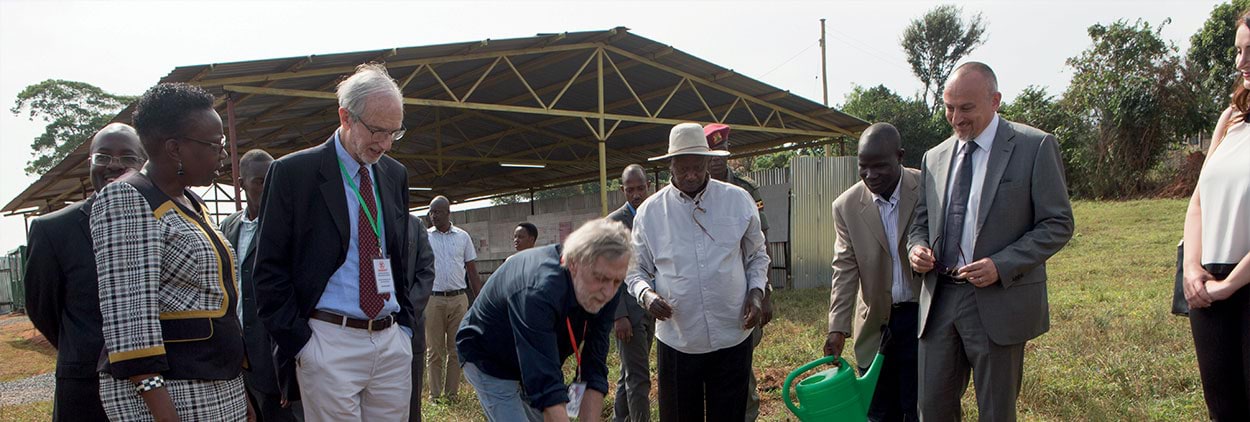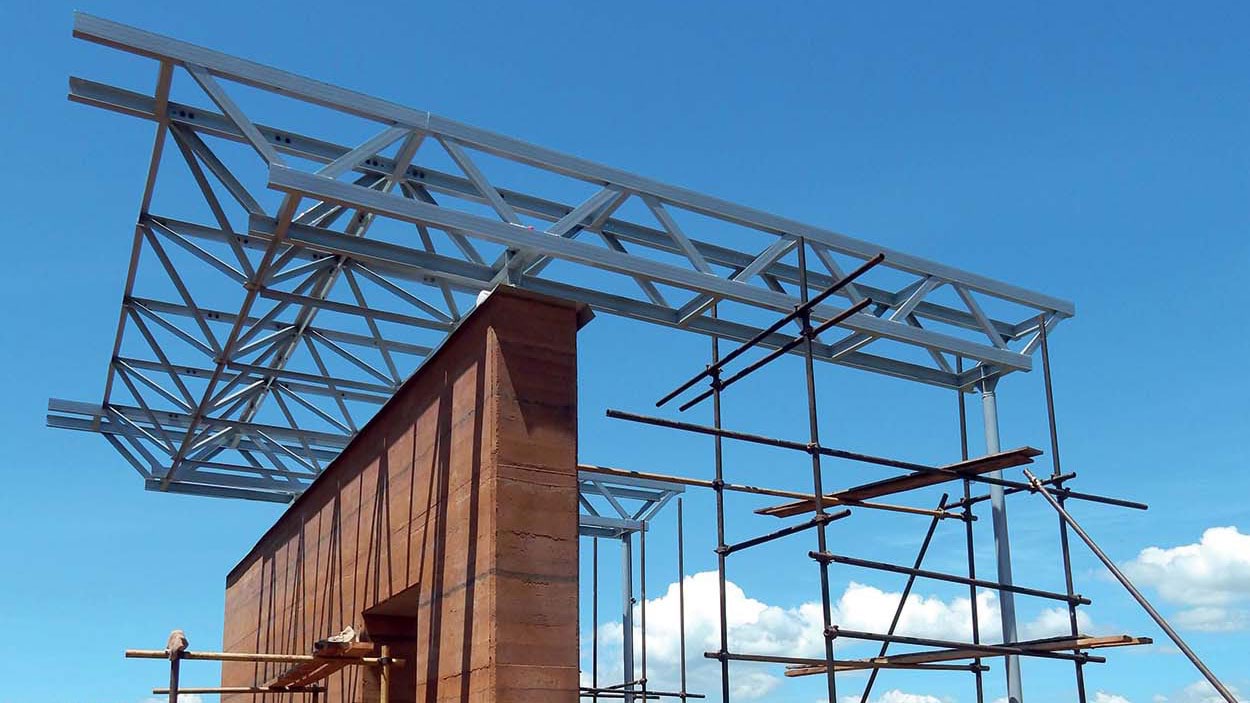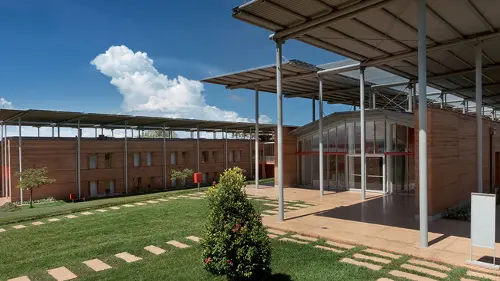
Mapei with Renzo Piano and Emergency in Uganda
Mapei: partners in a paediatric surgery project as part of the development of a health network of excellence in Africa.
On the 10th of February in Entebbe, Uganda, Gino Strada and Renzo Piano, along with the President of the Republic of Uganda, Yoweri Museveni, and the Minister for Health, Jane Ruth Aceng, laid the first stone of Emergency’s new project: a Centre of excellence in Paediatric Surgery that will be built next to Lake Victoria, 35 km from the capital Kampala. Mapei will also play an active role in this important project and two of the company’s highly qualified engineers, Elisa Portigliatti and Marco Cattuzzo, were also present at the inauguration ceremony.
On the 10th of February in Entebbe, Uganda, Gino Strada and Renzo Piano, along with the President of the Republic of Uganda, Yoweri Museveni, and the Minister for Health, Jane Ruth Aceng, laid the first stone of Emergency’s new project: a Centre of excellence in Paediatric Surgery that will be built next to Lake Victoria, 35 km from the capital Kampala.
Mapei will also play an active role in this important project and two of the company’s highly qualified engineers, Elisa Portigliatti and Marco Cattuzzo, were also present at the inauguration ceremony.
The need for a centre specialised in Paediatric Surgery, to serve Uganda and nearby countries, was highlighted by the African Ministers for Health from the member states of the ANME (the African Network of Medical Excellence), created thanks to an Emergency initiative in 2009 with the aim of developing health systems and networks in member states to bring free health care of excellence to Africa, a concrete way of declaring every person’s right to receive free health care of the highest order.
The hospital in Entebbe will be the second Centre of excellence in the network, following the opening of the Salam Centre for Cardiac Surgery in Khartoum, Sudan. In Uganda the infant mortality amongst the under-fives is 138 deaths for every thousand births. To guarantee free surgery in such a context is of absolute priority in order to help lower the infant mortality rate in Uganda and the surrounding countries.
“Millions of children die every year simply because they have no access to medical care. A lack of resources? Too little concern for the suffering of part of the population? A lack of responsibility from the governments? Whatever the reason, the question is always the same: should we just carry on tolerating this scandal, or should we make every effort possible to save, or improve, the lives of millions of human beings?” explained Gino Strada.
The Ugandan government decided to take an active part in the project by donating the plot of land where the centre is to be built.
Renzo Piano Building Workshop designed the hospital in collaboration with Tamassociati, structural design was carried out by Milan Ingegneria and the plant layout and systems were designed by Prisma Engineering.
“When Gino Strada asked me to take part in Emergency’s new challenge I didn’t have to think twice; I said yes straight away! This hospital will be a model for medical excellence, environmental sustainability, independence from external energy supplies and the harmonious distribution of space”.
A MODEL FOR MEDICAL EXCELLENCE
The hospital will have 3 operating theatres and 78 beds and will also act as a training centre for young doctors and nurses. It will be made up of three buildings parallel to each other with large, flat roofs, the key elements of the project. The first one, a single-storey building and the smallest of the three, will be used as a welcome area. The others will have two storeys and will run alongside the courtyard, with operating theatres and intensive care units at basement level. The central courtyard will have a garden overlooked by corridors and rooms and will be enclosed on the western side by a building with the living quarters for the hospital staff.
The hospital will be built using the traditional pisé technique (rammed earth technique): a mixture of soil, sand, gravel and water rammed into wooden formwork, but in this case combined with binders of the latest generation, developed by Mapei, to make the structure more stable, safer and more durable. The large flat roofs, made from wooden beams and steel tie-rods, will protect the hospital from bad weather and the beating sun and will be used to support 5,000 m2 of photovoltaic panels supplied by Enel Green Power.
“We will be using the earth’s natural resources, water and sunlight, the ultimate goal of modernity” declared Piano. “Built on the banks of Lake Victoria, the centre will be surrounded by nature and woodland. The vegetation will form a horizon for the younger guests and the trees will be like a metaphor of the process of recovery”.
MAPEI’S CONTRIBUTION: THE FRUIT OF RESEARCH
After more than 3 years of research work at the Corporate R&D laboratory in Milan, Mapei now has an innovative system available for Emergency, the team of designers from the RPBW (Renzo Piano Building Workshop) studio and the main contractors for them to build the new hospital structure using the pisé technique. This construction method, which is widely used all around the world, is an antique tradition based on compacting layer upon layer of locally-sourced soil in structures similar to formwork.
The development of the latest generation of binders, specifically formulated by Mapei Research, has allowed this centuries-old tradition to become more versatile and durable and, thanks to new innovations in the field of chemical products for the building industry, it is taking up a new role in major projects of today.
This intervention is part of Mapei’s strategy to support projects based on solidarity and social responsibility by offering the company’s technology and assistance from laboratory technicians, to help with research into innovative products that reflect the philosophy of the projects, and site engineers and technicians, to provide on-site assistance during the actual construction work.
Site preparation work has already commenced in a structure rented by Emergency in Maranello (Italy). Here, a life-size mock-up will be built (a wall more than 9 metres long), a kind of draft proposal of their “method statement” and a quality-control model to perfect construction work using the pisé technique. This will be an important preliminary phase for Mapei’s Corporate R&D Laboratory and Technical Services-Major Projects Division and it will help them acquire all the useful information they will need to help organise the support work in Uganda during construction work.
THE HISTORY OF EMERGENCY
Emergency is a humanitarian association founded in Milan in 1994 and its mission is
to bring help to civilian victims of war and poverty.
Since 1994 until today Emergency has intervened in 17 countries, building hospitals, operating theatres, rehabilitation centres, paediatric centres, first-aid units, health centres, a maternity centre and a heart-surgery centre. Following requests received from local authorities and other organisations, Emergency has also contributed to the refurbishment and supply of vital equipment for existing health centres. Since 1994, teams of Emergency personnel have brought help to more than 8 million people.
And it is because they understand the effects of war that, since it was first formed, Emergency has always been committed to promoting peace.
In 2008, along with several African countries, Emergency drew up their Manifesto for a medical system based on human rights to vindicate health care based on equality, quality and social responsibility. In September, 2010 Emergency published a document entitled “The world we want” as a way of sharing the ideas and values that inspire their work.
Emergency became a legally recognised NPO in 1998 and NGO in 1999. Since 2006, Emergency has been officially recognised as an NGO partner by the United Nations – Department of Public Information. Since 2015 it has been a member of Economic and Social Council as an association with Special Consultative Status.










